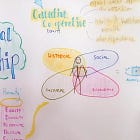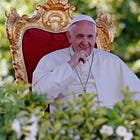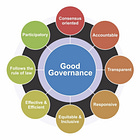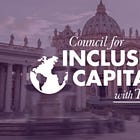Democracy has not collapsed — it has been systematically replaced. Beginning with UNESCO's 1968 Biosphere Conference, international institutions spent 57 years constructing a parallel governance system that operates through algorithmic indicators, ethical frameworks, and emergency protocols rather than electoral mandates.
executive summary
Four institutional tracks built this architecture: UNESCO's ethics pipeline, launched from the biosphere concept, embedded moral authority into every policy domain. IIASA's global modeling (founded 1972) evolved into the SDG indicator framework that measures and adjusts behavior at planetary scale. Health and environmental governance created templates for indicator-driven commitments that bypass national sovereignty, consolidating with other governance mechanisms through the Sustainable Development Goals. And emergency protocols established triggers for automated international coordination.
This system now governs through a continuous detect-prevent-respond-prepare cycle, where real-time surveillance data streams feed ethical processing systems that generate policy outputs and adjust performance indicators.
The evidence traces back to UNESCO's foundational 1968 Biosphere Conference, which established the conceptual framework for planetary-scale governance viewed through closed systems theory modeling — Spaceship Earth, if you will. From this ecological starting point, UNESCO systematically expanded ethics from environmental science into religion, culture, information, governance, AI, and neurotechnology. UN frameworks evolved from the 1972 Stockholm Conference through millennium goals to SDG indicators that effectively resulted in policy set above electoral systems, with the WHO Pandemic Treaty automating global coordination through surveillance triggers. Corporations and other stakeholders contribute through Trisectoral Networks, and central banks provide the foundation of the construct through programmable infrastructure such as CBDCs, paving the road for inclusive capitalism.
What citizens experience as democracy — elections, parliaments, debates — now operates as institutional theater. Actual governance flows through indicator-ethics-emergency pipelines that process inputs and generate outputs without democratic input. The post-democratic state is not coming; it is here, documented in primary sources spanning nearly six decades — and functioning exactly as designed. While Covid-19 served as the live test-run of this creation, the Pandemic Treaty placed it into legal instrument.
The operational reality is a world governed by advanced AI systems powered by Digital Twins that create real-time simulations of global behavior. Continuous surveillance feeds behavioral engineering programs developed through social sciences, while legal frameworks codify ethics as enforceable protocol. Citizens who fail to act for ‘the common good’ — as defined by algorithmic processing of indicator surveillance data — face automatic correction through programmable economic and social systems.
These are bold claims, I know. I am well aware.
Now, let me source it for you.
the emergency framework
Let's begin by detailing the fundamental architecture—with WHO's Annual Report of 2018 published in 2019 titled 'WHO's work in emergencies: prepare, prevent, detect and respond'1, though I could alternatively have chosen the UK Government's 2025 publication, 'Emergency preparedness, resilience and response concept of operations'2, or even the CDC's current page on 'Global Health Security'3, with the European Union's similar titled 'Health Emergency Preparedness and Response Authority'4 from 2024. They are, in fact, all remarkably similar in their core framework, though terminology varies—the WHO prefers 'prepare', while the CDC substitutes 'resilience'. Similarly, what the WHO calls 'detect' becomes 'surveillance' in CDC terminology and 'early warning' in EU frameworks — though with some marginal shifting patterns of function.
The pattern is this:
An early warning system56 picks up data from global surveillance. This data is transmitted to a digital twin model78, which is used to forward predict into the future. And if this prediction should detect a danger for humanity, then…
Prevention strategies enter the game. These are small, passive nudges9 — like an increase in politician rhetoric about mask-wearing10, or MSM stories about allegedly incoming variants11 which present a supposed real-life danger to humanity. Small things, intended to inspire an ethic of responsibility12. However, with this approach eventually exhausted, a need will be created to…
Respond to this alleged health threat. This relates to active, legal measures which could include pseudoscientific mask mandates13, distancing rules14, school closures15, progressing to quarantines, lockdowns16, and potentially even mandatory vaccination17 and vaccine passports18 (ie Digital IDs19) enabling travel restrictions20.
Eventually, with the alleged crisis receding, it's time to take stock and learn from the present experience21. The difference in outcome relating to the digital twin prediction and the actual result is sent back to the Digital Twin models, hypothetically improving the algorithmic decision making. This, in effect, is adaptive management22, and helps the system prepare for the next crisis.
Detect - Prevent - Respond - Prepare23.
This isn’t a hypothetical scenario. This is what took place during Covid-19. And all of this was driven by surveillance data indicators24 such as:
How many people took vaccines, were ill, hospitalized, or died.
Test positivity rates, contact tracing compliance, and R-numbers determined policy escalation.
Mobility data from smartphones tracked social distancing adherence, while facial recognition systems monitored mask-wearing compliance in public spaces.
Hospital bed occupancy, ICU capacity utilization, and ventilator availability triggered lockdown decisions.
Wastewater monitoring detected community spread before symptomatic cases appeared. Economic indicators measured business closure compliance, workplace attendance, and public transport usage.
Even social gathering sizes were monitored through cell phone location clustering and social media analysis.
Mental health indicators tracked population stress levels and compliance fatigue, feeding back into messaging strategies.
School attendance rates, variant surveillance data, and cross-border travel patterns.
All of these became inputs for the algorithmic decision-making apparatus — a comprehensive digital panopticon that measured human behavior in real-time and automatically adjusted policy responses accordingly. Add Digital ID and Test-and-Trace25 via 'Citizen Science'26 (mobile phone tracking) to the GEOSS live-streaming satellite surveillance27, and you have a top-down system enabling total control of the individual.
And the 'crisis' never even had to be legitimate. The modelling could, in fact, be completely wrong2829 — it could have been deliberately distorted to suggest half of Norway's population would perish should they fail to quarantine its population on account of a coughing dog in Queensland.
That's the magic of those black box models. The very same you're not allowed to call into question, not allowed to independently verify, nor review in terms of source code. And you’re certainly not allowed to sue them into the ground when their predictions turns out stratospherically incorrect, thus destroying your business and causing the worst financial downturn since the Great Depression3031. Because the global modellers 'just modelled the outcome', the politicians 'only acted on the best available scientific consensus', the central banks ‘merely facilitated the policies’, while the government only 'brought together the stakeholders to protect the people'. Precisely no-one can be held to account — and that is a feature, not a bug, of the system.
And those who object to the algorithmic conclusions are promptly silenced, censored, and punished for even raising the alarm. It is, in no uncertain terms, a deliberate construct of technocratic, top-down management, with absolutely no aspect of democratic principle integrated whatsoever. And that’s by design.
anticipatory governance
What we experienced during Covid was, in short, an Early Warning System gone rogue (it must have been, since no-one allegedly is responsible), projecting untold deaths — with Neil Ferguson's questionable source code32 (clearly never 'peer reviewed' by anyone competent) providing scary projections. But that was just a prelude. Because simulating the spread of infectious disease is a field in which the International Institute for Applied Systems Analysis33 has been engaged in since its founding back in 1972. And the establishment of the IIASA was soon followed by UNEP GEMS in 1974 — the global environmental monitoring system. And these both followed — along with the founding of UNEP itself — the treasonous May 23, 1972 agreement between the United States and the Soviet Union.
But wait. GEMS relates to the environment, not public health, right? Well, not so fast. Almost as soon as UNEP GEMS was founded, public health surveillance data was included in their streams. This wasn't much of a surprise, because the third SCOPE report from 1973 — the action plan for GEMS — detailed this inclusion in chapter 12, along with the monitoring of emissions (with carbon dioxide as a noted example) and sociological and economic monitoring. The environmental monitoring developed through the 1979 World Climate Conference, while the social and economic aspects evolved through Lalonde's 1974 report, which established the Social Determinants of Health framework — a set of indirect coefficients claiming to be about health.
And while the sketchy 1976 Swine Flu episode unfolded at Fort Dix, a simultaneous meeting convened in Rougemont, which included pharmaceutical industry executives and senior members of public health institutions — such as Walter Dowdle of the CDC, who delivered the opening and closing remarks. The theme was surveillance and vaccines, a theme repeated in the very first Pandemic Plan, signed by CDC head William Foege in 1978.
This initiative accelerated through the European Scientific Working Group on Influenza in the early 1990s, leading to the hugely questionable yet politically expedient H5N1 episode in Hong Kong in 1997, before Foege would again surface to introduce the world to the Manhattan Principles in 2004 — also known as One Health. This initiative suddenly began to blur the demarcation between public health and environmental monitoring, through which claims of zoonotic illnesses progressively took hold, culminating with Covid-19 in 2020. And as a side note of how deep this corruption sticks — members of the almost entirely big pharma funded ESWI in short wrote the 1999 WHO Influenza Pandemic Plan exclusively.
The merger of environmental health and zoonotic disease was not by accident. Both were discussed at the 1968 UNESCO Biosphere Conference, where Recommendation 3 makes this fairly explicit. Man is to be balanced with his environment in order to avoid alleged zoonotic disease. One Health then indirectly included global, integrated land use management — simultaneously developed through the Convention on Biological Diversity's Ecosystem Approach — before the World Bank in 2006 detailed exactly how pandemics should all be financed34. And through a few further iterations, the One Health approach eventually landed expressly in the recently passed Pandemic Treaty, a treaty which now models all claimed ecosystem disturbances under one and the same roof — even secondary factors such as the determinants of health.
And this, without uncertainty, means that the Pandemic Treaty can trigger its emergency clauses when a computational black box model picks up any surveillance data anomaly — legitimate or not. And this can — and obviously will — be used to drive crisis policy during future ‘emergencies’.
What I say here is that the real-time global surveillance data, forwarded to digital twin global models, used to predict the future can — and will — be used to set policy in the future with absolute impunity. And the next inclusion will be that of Planetary Health, which beyond One Health’s conflation of human health with that of the environment further adds atmosphetic concentration of carbon dioxide, and all the other indices modelled by the Planetary Boundaries framework.
the SDG Indicators
Setting aside flawed models (and they are deeply flawed), what we have is a range of indicators ultimately driving policy — globally. While the Planetary Boundaries indicators include a broad range of alleged outer limits of human behavior, in more popular context we have a different set of indicators measuring not just environmental behavior, but also economic and social. And those indicators are commonly known as the Sustainable Development Goals.
The Sustainable Development Goals in themselves are just soft law. They’re inspirational objectives, outlining no clear pathway to success. But that problem is easily solved through associating a set of indicators along with expected value ranges, and then judging a substrata of human existence on basis of deviance from the norm. And that’s where the SDG Indicators enter the play.
The SDG Indicators quantify every SDG in numeric terms: number of pregnant teenagers in New Zealand, average income in Sierra Leone, life expectancy in Malawi. The SDG indicators encompass them all. And those indicators — along with Human Development indicators, Aichi indicators (biodiversity), and others — are used as inputs and modeled by global digital twins, such as DestinE. Should a projected problem arise, it will typically be of either socio-economic character or due to an environmental disturbance. Consequently, through One Health, these all suggest that a ‘pandemic potential’ zoonotic disease may arise which could kill millions in a heartbeat, justifying lockdowns in South Korea as the Digital Twin model predicted an early flare of future illness there with precision. From there, the 4-step model above kicks in starting with prevention, and the nation is locked down before the operation can be exposed for what it truly is — fraud. Because all those who try are promptly censored for 'misinformation' as they ‘endanger our collective security’ under the rules of 'information ethics' — and should people take to the streets, then governments can instruct the banks to cut off their access to their own money.
But pandemics alone will not cut the mustard when it comes to general emergency governance. We also need 'Responsibility to Protect'35, which call for global force projection should 'indicator' thresholds be crossed, per expert-panel evaluation. We have 'Disaster Risk Reduction', which allow for the forcible transfer of people during alleged emergencies36, and we have 'The Right to a Healthy Environment'37 which is guaranteed — regardless of the impact on humans38. In other words, we have a full framework which allows not only the questionable mandates during Covid, but further the forcible removal of people, the use for global force projection, and the prioritization of nature over man — all on account of a computer simulation with absolute impunity. And through a future ‘climate crisis’, the modelling could easily determine these impact the health of ecosystems in Iceland, leading to a prompt call for vaccine mandates in… *rolls dice*… Laos. Sure, the example is exaggerated for effect, but it is hypothetically possible.
And all of this is outlined in their own documents, in the most incredibly deceptive manner imagineable.
computational ethics
In order for this system to remain functionally cohesive, everyone and everything must be aligned. And that's where the next stage of the pipeline arrives — prevention.
See, indicator data modeled through digital twins results in… yet more data. But few, if any, accept raw data as a direct measure of action. Consequently, to become useful it has to be converted into an imperative to act. It has to be converted into an ethic.
And we have environmental ethics39, health ethics40, planetary ethics41. In fact, we have global ethics42, where the ethic relates to comparing this raw data — legitimate or not — to some arbitrary threshold set by expert committee. Should your personal 'income' indicator straddle outside the reference threshold, then the computer will consider it bad. Should it fall within, it's positive and thus — good. Good and bad. And the determining of good versus bad is a matter of — yes — ethics43.
Computational ethics44.
The AI model will evaluate you as a range of indicators: your personal income, age, where you live, where you went to school, and so forth45. All of those are reflected by your own personal data profile, which for a given transaction will be compared to a reference (strictly speaking, it'll probably be a point dotted with one or more planes in N-dimensional space), thus yielding a singular value upon evaluation.
If that value is negative, then you're an oppressor; if it's positive, then you're the oppressed. Consequently, the entire matter of ethics has been reduced to a simple dot product, and your appropriate reward — or punishment — will be left for the computer to determine. It could count towards a trip abroad if the algorithm determined you’re oppressed, or it could lead to marginally more expensive groceries through dynamic CBDC retail pricing if you’re the oppressor. But it could similarly result in quarantines or travel restrictions in the future 15-minute city should you fail to tow the line with ‘the common good’.
Technically, a 'global ethic' is static, and that's no good as it places everyone on an even ground, which logically then means the system cannot factor ‘intergenerational justice’46 into its calculations, in essence meaning judging you by the quantity of carbon dioxide your grandparents allegedly emitted — and never mind the system having no specific record in that regard. And, though gramps could have been a wonderful man who heroically battled half the Nazi army, that does not matter in the slightest. No, this is pure ‘original sin’ territory, and the ‘intrinsic worth’47 of individuals come down to alignment with the system and alignment with the system alone in contemporary view.
However, should we generalize the ‘global ethic’ rather as the inclusion of not specific indicators but the whole palette — a vector, also inclusive of your community, your country, your continent and the world — then it will perform the function of a universal moral grammar48 of exactly the sort John Mikhail has been developing for decades.
This vector can then be used to target you specifically as an individual — to your nation as a whole, or even your ethnicity or religion. And as technology is progressively advanced and integrated, these targeted adjustments can be aimed more precisely. When you today enter a query on Google, it can quickly determine if this is information of the sort UNESCO previously decided is 'information that you need'49 in regional or even personal capacity (should your account be signed in). However, should the computational ethics determine that the query makes you an oppressor, sorry, you could instead be directed to links less 'harmful' to... well, probably the system itself. But more direct queries sent to AI solutions such as ChatGPT could through ‘AI Ethics’50 be specifically tailored to the individual, meaning through a personal profile assessment, AI can in precise detail craft — and distort — information to you and only you in the most deceptive and manipulative way imaginable.
The final step of this process logically leads to transhumanism: the Brain-Computer Interface51, where Neuroethics52 replicate the ‘ethical’ calculation of the prior. But this time, it could well affect your thoughts directly. Not satisfied with merely determining what you should be allowed to view, it may also — with time — be able to encode how you should feel about certain things. A field, presently embedded through Social-Emotional Learning53, which works by inserting exploitable backdoors in your childrens logical reasoning capacity under the guise of care.
the imperative
Consequently, the ethic is the imperative which connects a processed data stream with man. But while ethics in the past came from religious ideology or culture typically led bottom-up, these ethics are now imposed top-down, integrating the outcomes of opaque computational modelling.
But presenting someone with an imperative is not enough. You need uptake. Consequently, common aspects of ethics (environmentalism, for one) should not only be taught in school, it should further be embedded in culture, church, information, governance, business, hell, even in science itself. And that's exactly what they progressively did:
Ethics was embedded into education through UNESCO's Global Citizenship Education54, with Life-long Learning55 ensuring your 'ethics' remain up-to-date, while social-emotional learning amplifying the emotional input signal.
Culture constitutes literature, music, arts and others, but while Alexander Bogdanov's Proletkult56 marked a good start, David Tabara's Cultural Frameworks57 broadened this approach considerably, making it more contemporarily relevant.
Religion was breached in stages, first through Paul Carus and Hermann Cohen's tireless work a century ago, with contemporary Vatican absurdities such as Laudato Si58 and Laudate Deum59 leaving no doubt as to its success. But Hans Kung’s 1993 charter introduced at the Parliament of the World’s Religions really does deserve a mention, not least because of it’s title, Towards A Global Ethic60, but also because that event marked the centennial of Paul Carus chairing the 1893 event61, the event at which he launched the interfaith movement62.
Information encodes claims of misinformation and disinformation, and its development marks a somewhat winding road, culminating with the Broadband Commission's two reports from 201963 and 202064.
Governance saw implementation first through the principles of 'Good Governance' detailing aspects of giving orders, and later 'Ethical Leadership'65 relating to receiving orders. Beyond, should a politician step out of line, the MSM can always begin targeted harassment ensuring promptly sees ‘reason’.
Business saw an early, influential drive through the Interfaith Declaration on Ethics in Business66, culminating with the 1993 Caux Round Table Principles67. This, through the Enron collapse, accelerated CSR and ESG, with these opaque metrics increasingly integrated into various financial benchmarks. If a large enterprise seeks to borrow money, it increasingly has to cater to what's considered 'ethical' — like it or not.
Science was captured initially through ICSU's SCRES68 and UNESCO COMEST69, culminating with not only healthcare staff fired for 'ethics violations'70 during COVID71 for refusing to carry out orders with which they disagreed, but climate change critics increasingly risk the loss of their jobs should they object to patent falsehoods and outright lies72.
Every single member was progressively required to sign an ethics declaration. And with that, their algorithmic fate was ultimately sealed. Align, or fail to feed your kids, fail to pay your staff, or fail to pay the rent. And that’s actually extremely relevant in this regard, because a bullet point of major significant is missing from the above list.
the moral economy
The moral economy73 was first outlined by Eduard Bernstein in 1899. While Julius Wolf in 1892 introduced the idea of the public-private partnership, using the common medium of exchange (which facilitated the inclusion of a middle man into the equation, eventually implemented through the BIS at its founding in 1930), Bernstein posited that this partnership should function to carry out an ideal. It should be used to carry out the will of the ‘common good’. And this initiative was then picked up in 1991, with Tony Blair carrying the torch through his article written for Marxism Today.
When Leonard S. Woolf wrote about International Government in 1916, he quietly elevated international organizations outside of democratic capacity into positions of power. Alfred Zimmern used this as a blueprint when founding the League of Nations, and this logically explains why the ILO and the IRC (precursor of ICSU) were formed in 1919 along with a host of similar international organizations. Zimmern in 1926 through The Third British Empire, detailed how the empire should transition to a model pivoting on economics and international social justice. Eduard Bernstein’s vision, so to speak.
This governance model was progressively promoted, first through IFDA's Third System, later to be implemented through Agenda 21, with the Trisectoral Networks detailing exactly how General Consultative Status NGOs should — in all but the explicit written word — take control of the UN system. And the partners relating to these tripartite agreements naturally required a place to organise, which logically explains the formation of the Trilateral Commission.
Today we have environmental NGOs, social NGOs, and economic NGOs, centered around obscure claims of 'justice'. However, these claims actually centre around controlling specialised aspects of the 'global ethic', such as specialised areas of environmental governance. Yet others specialise in different fields, such as health.
With the passage of the Pandemic Treaty — and through modelled predictions of 'potential impacts on health', justified under claimed 'emergency' — that system is now just a few steps away from seizing complete control. It's just a matter of the treaty taking full effect. At this stage, should a pandemic be called, any 'indicator' can be used against you because the computational model predicted you were the oppressor. And there is no-one to appeal to, because the algorithm is always right.
Yet, this entire system claims to represent a moral vision for tomorrow. And the final step towards Bernstein is the more explicit inclusion of the economy itself in this ultimately automated, cybernetic loop. And the Fabian Society took a fairly conclusive step in that direction through their 2023 report, 'In Tandem,' which promotes the idea of forming the EPCC, a tripartite committee with inclusion of the treasury (representing the public taxpayer), the Bank of England (the private banking cartel), and a third partner, typically an environmental, economic, or social NGO. And those three ‘partners’ will work together to 'align' not only monetary policy — set by the Bank of England — but also fiscal policy during ‘crises’.
That's right. The document suggests the BoE and some arbitrary NGO should have direct impact on tax & spend policy, completely outside of democratic capacity. But as these NGOs will operate in the name of environmental, economic, or social ethics... well, the logical conclusion is that the idea of the moral economy truly will come to pass through the integration of a do-good NGO with the central bank itself without a shred of democratic accountability. And should any member of the democratically elected government disagree... well, ask Truss and Kwarteng to fill you in on the details in that regard.
The moral economy, thus, comes to pass through the gradual transfer of fiscal policy power to the unelected. But should the NGO be a mere front for those who prefer to live in the shadows, then the tripartite governance model is, essentially, no more democratic than Lenin's New Economic Policy ever was.
inclusive capitalism
This tripartite structure is the operational foundation of inclusive capitalism — but the inclusion isn't about bringing more people into prosperity, it's about including stakeholder NGOs directly into economic governance itself. Through this model, environmental justice NGOs could dictate climate policy while controlling fiscal spending, social justice NGOs could determine equity allocations while influencing monetary policy, and economic justice NGOs could shape industrial strategy while accessing treasury functions. Or should those NGOs be controlled from behind the curtain by those central banks, then we truly are back with Lenin
Combined with CBDCs providing programmable money infrastructure, this creates an economy where access to capital becomes wholly conditional on algorithmic compliance with stakeholder-defined ethics. Your business loan, your mortgage, your government benefits — all flow through systems that automatically enforce ESG metrics, carbon budgets, and social justice indicators determined by unelected NGOs sitting in tripartite committees. The economy becomes ‘inclusive’ for those who align with the computational ethics, while exclusion becomes the punishment for those who don't. It's stakeholder capitalism operationalized through direct institutional control over the monetary and fiscal levers of state power, completing the circle from surveillance indicators to emergency protocols to economic enforcement.
the universal moral grammar
The Sustainable Development Goals instituted this vision. Covid brought it into reality. The Pandemic Treaty will place it at arms length of a budding dictator. And Inclusive Capitalism will finance it, simultaneously ensuring your assets are gradually stripped should you refuse to play ball. In fact, if you have any assets at all, that’s probably precisely what the plan is. And none of this was ever discussed, voted on democratically, or even disclosed to the public. Rather, the people were continuously distracted by a compliant MSM, ready to promote anything from complete irrelevancies to outright lies — because anything else would be unethical. And we can't have that, now can we?
But while distraction, deceit, and willfully misleading statements from politicians, chief scientists, and professional managers are all major components in this grand collusion, they are only effects of this grand collusion.
The systematic misdirection operates far beyond simple lies. It functions through what appears to be legitimate academic research, peer review processes that exclude dissenting voices, and scientific journals that refuse to publish findings challenging the prevailing narrative. University departments receive funding streams conditional on supporting approved research directions. Think tanks produce policy papers that appear independent while being funded by the same networks promoting the agenda. International conferences create the illusion of global consensus when they're actually echo chambers of pre-selected participants.
Meanwhile, the public faces algorithmic curation of information that gradually shapes perception without appearing censorious. Social media platforms don't outright ban discussions — they simply ensure contrarian content receives minimal reach while amplifying approved messaging. Search engines subtly rerank results to prioritize ‘authoritative’ sources that happen to align with system objectives. News aggregators create the impression of diverse sources while all drawing from the same institutional pipeline working to the same objective.
This extends into entertainment, where climate anxiety and social justice themes are woven into popular culture, documentaries that present contested science as settled fact, and celebrity endorsements that make compliance appear fashionable rather than coercive. Even children's programming now incorporates SDG messaging, creating generational conditioning that makes the surveillance-ethics-emergency framework seem natural and necessary.
The genius lies in making resistance appear fringe while compliance feels like informed consensus — and ultimately, righteous. But it all, ultimately, boils down to a synthetic universal moral grammar, which leads to the modeled outcome of indicators which neither you nor I ever were given a realistic opportunity to vote on — or even comprehend. And should you dare to call it into question, you'll be ridiculed, censored, robbed, have your liberties gradually curtailed, your career destroyed, and your assets progressively stripped. It's just a matter of time.
So in closing I ask our politicians — were you deceived along with us, or were you always in on it?
Detect: Modelling and Indicators
1948: Foundational Prism
UN Universal Declaration of Human Rights741972: Foundation of Global Modelling
International Institute of Applied Systems Analysis751987: Objective Modelling
UNESCO The World by the Year 2000761990: Capacity-Building Prism77
UNESCO World Declaration on Education for All782000: Millennium Indicators
United Nations Millennium Declaration792015: Sustainable Indicators
United Nations Sustainable Development Goals80
Prevent: The Ethics Pipeline
From Systems Modelling to an Ethic of Science (1985–86)
1985: Modelling Science
UNESCO World Modelling811986: Modelling Science → Ethics → Science
UNESCO Venice Declaration82
Embedding Ethics into Learning
1986: Ethics → Education
UNESCO À la recherche d’une sagesse pour le monde83, Royaumont Colloque
Branching into Specialized Ethical Domains
1993: Ethics → Religion
PotWR Declaration Toward a Global Ethic841995: Ethics → Culture
UNESCO Our Creative Diversity851997: Ethics → Bioethics
OHCHR Universal Declaration on the Human Genome and Human Rights861997: Ethics → Governance
UNDP Governance for sustainable human development871998: Ethics → Information
UNESCO 2nd International Congress on INFOethics'98881998: Ethics → Higher Education
UNESCO World Declaration on Higher Education891999: Ethics → Science
UNESCO World Conference on Science90
Extending Ethics into Business and Security
2000: Ethics → Business
UN Global Compact912001: Ethics → Security
(this should be anthrax) UN The Responsibility to Protect92
Algorithmic & Neurotechnology Ethics
2019: Ethics → Artificial Intelligence
UNESCO Ethics of Artificial Intelligence932025: Ethics → Brain–Computer Interfaces
UNESCO Ethics of Neurotechnology94
Respond: Emergency & Disaster
2005: Responsibility to Protect
UN World Summit Outcome952005: Disaster Risk Reduction
Hyogo Framework for Action962020: Real-time dashboard became triggers for lockdowns
COVID-19 Health Indicator Governance972022: Right to a Healthy Environment
OHCHR Users Guide982025: Pandemic Agreement
World Health Assembly adopts historic Pandemic Agreement99
Prepare: Sustainable Development Goals
4a. Social Governance
4b: Health Governance
4c: Environmental Governance
1988: Climate Modelling
The Intergovernmental Panel on Climate Change1001992: Soft Law Environmental Conventions
United Nations Rio Earth Summit1011997: Indicator-driven Emissions Targets
UNFCCC Kyoto Protocol1021998: Access to Environmental Information & Justice
UNECE Aarhus Convention1032000: Holistic vision of ecological integrity, social justice, and intergenerational equity
Earth Charter1042015: Nationally-determined, indicator-based commitments
UNFCCC Paris Agreement105
4d: Planetary Governance
Shooting Down Anticipated Rebuttals
‘This is conspiracy theory’
Everything described is sourced from official WHO, CDC, EU, and UN documents. The detect-prevent-respond-prepare cycle is outlined in WHO's 2019 Annual Report, the UK Government's 2025 Emergency Preparedness publication, and CDC's Global Health Security pages. UNESCO's ethics pipeline from the 1968 Biosphere Conference through AI and neurotechnology is documented in their own publications. The SDG indicators framework measuring 232 specific metrics globally is public UN policy. This isn't speculation - it's analysis of openly published governance architecture.
‘These are just normal public health/environmental frameworks’
Normal public health doesn't require real-time surveillance feeding algorithmic models that automatically trigger policy responses without democratic input. Normal environmental policy doesn't use digital twin modeling to predict human behavior and adjust it through programmable economic systems. The COVID-19 response demonstrated the system in action: surveillance indicators (test positivity, mobility data, mask compliance) fed digital models that generated lockdown policies automatically. Citizens who objected were censored for ‘misinformation’. This isn't normal governance - it's algorithmic control.
‘The Pandemic Treaty and SDGs are just international cooperation’
The Pandemic Treaty automates global coordination through surveillance triggers, bypassing national sovereignty when computational models detect ‘anomalies’. The SDG indicators create a comprehensive framework where every aspect of human behavior (income levels, teenage pregnancy rates, carbon emissions) becomes input for global digital twins. When DestinE modeling projects problems, emergency protocols activate. This isn't cooperation - it's automated governance where algorithms process surveillance data and generate binding policy outputs without democratic input.
‘Digital twins and indicators are just planning tools’
During COVID-19, these ‘planning tools’ determined which businesses could operate, whether children could attend school, and who could travel. Hospital bed occupancy triggered lockdowns. Mobility data tracked compliance. Contact tracing monitored associations. Wastewater surveillance detected community spread before symptoms. The system processed human behavior as data points and automatically adjusted restrictions. Future integration with CBDCs and Digital IDs will enable real-time economic enforcement. These aren't neutral tools - they're control mechanisms.
‘Ethics frameworks are good - who's against ethics?’
The ethics are computational. AI evaluates your personal indicators (income, age, location, education) against expert-designed thresholds. If negative, you're an ‘oppressor’ facing economic penalties through dynamic CBDC pricing. If positive, you're ‘oppressed’ receiving benefits. This reduces human worth to algorithmic calculations. UNESCO's expansion of ethics from environmental science into religion, culture, governance, and neurotechnology means every domain of life becomes subject to expert moral evaluation rather than democratic choice.
‘Democratic institutions are still functioning’
Elections continue but actual policy flows through the indicator-emergency pipeline. During COVID-19, democratically elected officials implemented policies generated by algorithmic analysis of surveillance data. Politicians claimed they ‘followed the science’ while health bureaucrats claimed they ‘only modeled outcomes’. No one could be held accountable because the system disperses responsibility across automated processes. Citizens experience democracy as theater while real governance occurs through technical apparatus processing surveillance inputs.
‘This is about protecting public health and the environment’
The system can trigger emergency responses for any surveillance anomaly - legitimate or fabricated. Neil Ferguson's catastrophically wrong COVID models destroyed economies globally, yet no one faced consequences because the politicians ‘acted on scientific consensus’ while modelers ‘just provided projections’. The black box nature prevents accountability. Future ‘climate emergencies’ or ‘ecosystem disturbances’ detected by digital twin modeling can justify lockdowns anywhere based on algorithmic predictions immune from democratic challenge.
‘These systems are voluntary’
Try operating a business without ESG compliance. Try maintaining professional credentials while questioning expert consensus. Try accessing banking without digital ID. The genius is making totalitarian control appear voluntary through economic enforcement. Healthcare workers were fired for ‘ethics violations’ during COVID. Scientists face career destruction for climate dissent. Market access requires stakeholder governance compliance. The system preserves choice in form while eliminating it in substance through moral authority rather than legal coercion.
‘This connects unrelated developments’
UNESCO's 1968 Biosphere Conference established the framework. IIASA's 1972 founding created global modeling capacity. UNEP GEMS (1974) began comprehensive environmental and health surveillance. The 1978 CDC Pandemic Plan outlined response protocols. The progression from environmental ethics → health ethics → AI ethics represents systematic expansion of the same authority structure. The Manhattan Principles (2004) merged environmental and health monitoring through One Health. COVID-19 activated the complete architecture exactly as designed.
‘Models can be wrong - that's why they're updated’
Wrong models triggering devastating policies is a feature, not a bug. The system learns from prediction failures through ‘adaptive management’ - the difference between predicted and actual outcomes improves future algorithmic decision-making. Meanwhile, citizens who suffered from wrong predictions have no recourse because no individual was responsible. The Great Depression-level economic destruction from COVID lockdowns becomes data for refining future control mechanisms. Accountability is impossible by design.
‘Central banks and CBDCs are separate from health policy’
The moral economy integrates all enforcement mechanisms. Environmental NGOs influence fiscal policy through tripartite committees with central banks and treasuries. Health emergencies justify programmable money restrictions. Carbon budgets control individual spending through CBDC infrastructure. ESG compliance determines credit access. The Fabian Society's 2023 ‘In Tandem’ report explicitly calls for NGOs to directly influence monetary and fiscal policy during ‘crises’. The integration is deliberate - economic enforcement of moral compliance determined by algorithmic processing.
‘Opposition voices still exist’
Opposition is managed through information ethics. Google can determine what information you ‘need’ based on your personal profile. AI systems like ChatGPT can tailor responses to individuals through computational ethics - providing different information to ‘oppressors’ versus ‘oppressed’. Social media algorithms suppress dissenting content while amplifying approved messaging. The system doesn't eliminate all opposition - it manages it through algorithmic curation, professional consequences, and economic pressure while maintaining the appearance of open discourse.
‘This is too complex to coordinate’
The architecture was built systematically over 57 years. UNESCO embedded ethics across domains. IIASA developed global modeling. WHO created emergency protocols. The BIS coordinated central bank infrastructure. Each component developed independently while following identical templates. COVID-19 demonstrated perfect coordination: surveillance → modeling → ethics → emergency response → economic enforcement. The system activated globally with remarkable synchronization because the infrastructure was pre-positioned through decades of institutional development.
‘People would never accept this’
They already have. Citizens celebrated lockdowns as ‘social responsibility’. They demanded vaccine passports for ‘public safety’. They applauded censorship of ‘misinformation’. They embraced surveillance as ‘contact tracing’. The system achieves compliance through moral authority - resistance appears selfish, irresponsible, and dangerous to community health. Future climate lockdowns will follow the identical pattern with citizens demanding action against ‘climate deniers’ threatening planetary survival. Compliance feels virtuous while resistance feels immoral.
‘Change is still possible’
The WHO Pandemic Treaty, when fully operational, can declare emergencies based on any surveillance anomaly processed through digital twin modeling. CBDCs will enable real-time economic enforcement. AI integration provides comprehensive behavioral monitoring and adjustment. Once the system is fully automated, democratic resistance becomes impossible - you can't vote out algorithms, petition digital twins, or hold emergency protocols accountable. The infrastructure exists now. The question is whether enough people recognize its nature before activation becomes irreversible.

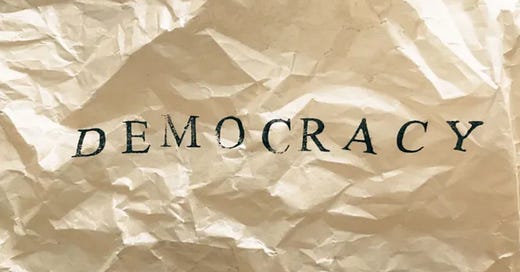




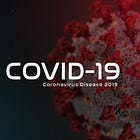

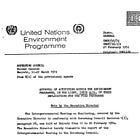






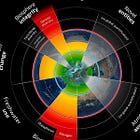

![WHO Pandemic Agreement [April, 2024]](https://substackcdn.com/image/fetch/$s_!HHbL!,w_140,h_140,c_fill,f_auto,q_auto:good,fl_progressive:steep,g_auto/https%3A%2F%2Fsubstack-post-media.s3.amazonaws.com%2Fpublic%2Fimages%2Fb69c8066-0498-4924-af63-1344abb2ec85_1206x612.png)


